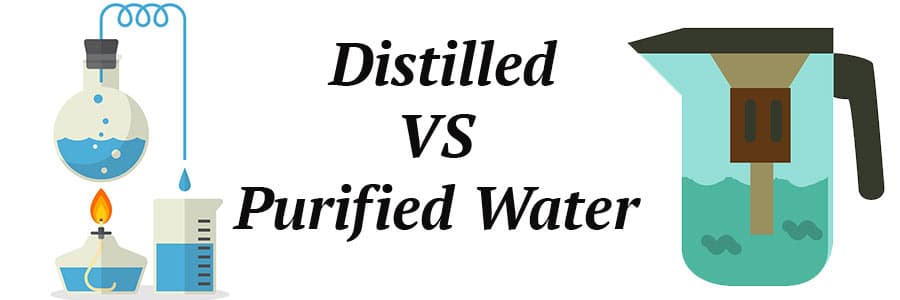Distilled Water vs. Filtered Water: Choosing the Right Type

Distilled water’s method ensures that almost every dissolved solid—from lead particles to organic compounds—stays behind in the boiling chamber, making it ideal for delicate machines like steam irons or humidifiers that choke on scale buildup [3]. Filtered water methods, however, strike a middle ground: they intercept chlorine, sediment, and many volatile chemicals while letting through healthy minerals that give water its pleasant mouthfeel and slightly sweet edge. In my kitchen, a home distilled water system sits beside a sleek countertop filter—one for my iron, one for everyday drinking—so I don’t have to choose between crystal-clear purity and that satisfying mineral boost.
When you weigh cost, convenience, and function, distilled systems run on electricity and require 30–45 minutes per gallon, translating into a higher energy bill and slower yield [4]. Filtered systems range from simple pitcher cartridges to under-sink units or full-house setups that deliver clean water at every tap, often at under $0.05 per gallon and with near-instant flow [5]. Ultimately, the right choice balances the desire for absolute purity against taste preferences, budget constraints, and how you use water in your daily life.
Understanding the Processes: Distillation and Filtration
Distillation transforms tap water through a simple yet energy-intense dance: heat pushes water molecules into vapor, while minerals, metals, and bacteria stubbornly cling to the boiling vessel. The steam travels through a condenser and drips down as droplets of nearly 100% H₂O—so pure it’s often called “laboratory grade” or “pharmaceutical grade” water [1]. This purity is unmatched when you need to avoid scale in CPAP machines or prevent false readings in chemical tests. Yet, it tastes like distilled air—eminently free of character but also lacking that subtle mineral whisper you feel on your tongue.
Conversely, filtration comes in many flavors. Activated carbon filters act like colossal sponges, adsorbing chlorine, sediment, and organic compounds into their countless microscopic pores, while letting beneficial minerals pass through. Reverse-osmosis systems push water through a semi-permeable membrane so fine that it blocks up to 99% of dissolved solids, nitrates, and microbes; often, these systems conclude with a remineralization cartridge that reintroduces healthy minerals for taste and pH balance reverse osmosis water filtration guide. Both approaches deliver water that sparkles in a glass and feels lively on the palate.

Choosing between distillation and filtration often hinges on your priorities. If you want zero minerals and absolute sterility—no wonder chemists and hobbyists swear by distillers. If you crave refreshing taste and mild mineral benefits, a well-maintained filter or a hybrid system might be your best bet. Research suggests that water retaining natural minerals supports hydration and overall well-being without compromising safety [5]. On a related note, while distillation discards virtually everything, modern filters can be tailored to remove specific threats—lead, VOCs, even microplastics—without flushing out every element you need.
Taste Test and Mineral Content: What Your Tongue Tells You
Have you ever wondered why some people rave about bottled spring water while others prefer the blank slate of distilled? A simple blind taste test can reveal surprising insights. Label two identical glasses “A” and “B”—one filled with distilled water, the other with filtered—and take the smallest sip you can muster. Let the liquid coat your tongue and notice whether it feels crisp, like a mountain breeze, or flat, like a soft echo of nothingness [2].
Most tasters describe distilled water as bland or even slightly hollow because the minerals that carry flavor are gone. Filtered water, in contrast, often carries a gentle sweetness or a warming note of calcium and magnesium, which can amount to up to 60 mg/L of beneficial minerals [3]. I remember the first time I did this test—it felt like tasting water for the very first time, realizing how accustomed I’d become to that subtle zing of minerals.

Beyond flavor, the mineral content of filtered water offers small health perks. Calcium supports bone strength and nerve function, while magnesium aids muscle recovery and heart health. Nutrition experts caution that prolonged consumption of demineralized water could subtly draw electrolytes from the body, affecting hydration balance [4]. If you crave purity but don’t want to forgo minerals entirely, consider pairing a distiller with a post-treatment cartridge or simply rotating between distilled for your steam iron and filtered for your morning glass.
Environmental and Financial Considerations
When we fill our glass with pure water, we rarely think about the hidden energy drains and waste footprints behind each sip. Distillation demands significant electricity—up to 0.5 kWh per liter—making it one of the most power-hungry home purification methods [3]. On the other hand, most cartridge filters rely on household water pressure, consuming virtually no extra energy but generating plastic waste in the form of spent cartridges. Reverse-osmosis setups improve efficiency but can still waste 3–4 gallons for every gallon purified.
That hidden trail of brine or spent filters can feel frustrating if you’re aiming for sustainability. One Chicago homeowner shared, “I switched to distilled water for my CPAP and ended up with six empty jugs piling up—and a spike in my power bill.” To counteract this, many eco-conscious families explore sustainable water treatment systems that blend low energy consumption with minimal waste, such as template-assisted crystallization units or gravity-fed carbon filters.
| Method | Energy Use | Water Waste Ratio | Annual Waste Output |
|---|---|---|---|
| Distillation | 0.5 kWh per L | 0% extra water | Plastic jugs(s) + brine disposal |
| Activated Carbon Filter | None | 0% | 4–6 cartridges |
| Reverse Osmosis | Minimal (pump) | 3–4 gallons wasted per gallon | Wastewater + membranes |
Financially, a quality home water distiller runs $250–$400 upfront plus about $0.45 per gallon in electricity. That can tally around $165 per year for a gallon-a-day habit [1]. A pitcher filter, by contrast, costs roughly $30 initially and $40 annually in cartridges—under $0.05 per gallon [3]. Reverse-osmosis systems cost $200–$500 installed, with yearly upkeep of $60–$100. Over five years, you might spend $1,200–$1,500 on distillation versus $250 for a filter pitcher or about $500 on an RO system.
Safety Blind Spots: The Limits of Purity
Even the clearest water can carry hidden risks that neither distillation nor basic filtration will entirely remove. Distillers excel at removing minerals and metals, but certain volatile organic compounds (VOCs) with boiling points close to water—think benzene or formaldehyde—can vaporize and re-condense alongside the steam, slipping through the process [4]. Simple carbon filters, while excellent against chlorine and sediment, may leave dissolved gases, microplastics, or certain bacteria and viruses untouched [5].
For the ultimate in safety, hybrid approaches—like coupling distillation with post-filter cartridges or layering reverse osmosis with ultraviolet sterilization—offer peace of mind. It’s crucial to know exactly what threats your system targets and what it leaves behind. If you’re curious about drilling down into trace pharmaceutical residues and micro-pollutants, our reverse osmosis water filtration guide unpacks each vulnerability and solution.
Conclusion
Choosing between distilled and filtered water feels like standing at a fork in the road without a map—one path leads to absolute purity at higher energy and cost, the other to refreshing taste with preserved minerals and minimal waste. Your ideal solution might even blend both: distilled for your iron and CPAP, filtered for your family’s daily sips and culinary creations. Whichever route you take, understanding the trade-offs of taste, health, environmental impact, and safety helps you fill that glass with confidence.
Sources
“`html
Complete Top Picks Comparison – 12 Products
| Product | Source | Price | Rating | Image | Buy |
|---|---|---|---|---|---|
| Distilled Water Gallons – Cases of 3-1 Gallon Bottles – 3 Bottles (3 Total Gallons) | Amazon | $24.99 | ★★★☆☆ |  | View |
| Pure Life Distilled Water 2.5 Gallon, 320 Fl Oz | Amazon | Check Price | ★★★★★ |  | View |
| 365 by Whole Foods Market, Distilled Water, 128 FZ | Amazon | Check Price | ★★★★★ |  | View |
| Amazon Grocery, Distilled Water, 1 Gallon (Previously Happy Belly, Packaging May Vary) | Amazon | Check Price | ★★★★★ |  | View |
| 16.9 oz Distilled Water for CPAP Machines | Made in USA | Use with ResMed and Respironics Machines | Travel-Friendly, Clean, Multi-Use (6-Pack) | Amazon | $21.99 | ★★★★☆ |  | View |
| Pure Life Distilled Water, 1-Gallon, Plastic Bottled Water (1 Pack), Side Handle | Amazon | Check Price | ★★★★★ |  | View |
| CO-Z 4L Brushed Stainless Steel Countertop Distiller Machine, Home Distilled Water Maker with Glass Pot, Purifier to Make Clean Water | Amazon | $119.99 | ★★★★☆ |  | View |
| Roberts Acqua Distillata Alle Rose (Distilled Rosewater) 10 fl oz. | Amazon | $14.44 | ★★★★☆ |  | View |
| Distilled Water, Singly Distilled, Laboratory Grade, 3.8 L | Amazon | $11.40 | ★★★★★ |  | View |
| SP Bel-Art GHS Labeled Safety-Vented Distilled Water Wash Bottles; 1000ml (32oz), Polyethylene w/Blue Polypropylene Cap (Pack of 2) (F12432-0004) | Amazon | $26.69 | ★★★★★ |  | View |
| Shengmilo MX06 city Electric Bike 1000W Urban Bicycle Fat bike electric 26″ E-bike 48V17.5AH Battery Adult E-mountainou bike | AliExpress | $329.07 | N/A |  | View |
| Shengmilo MX06 city Electric Bike 1000W Urban Bicycle Fat bike electric 26″ E-bike 48V17.5AH Battery Adult E-mountainou bike | AliExpress | $329.07 | N/A |  | View |
“`

